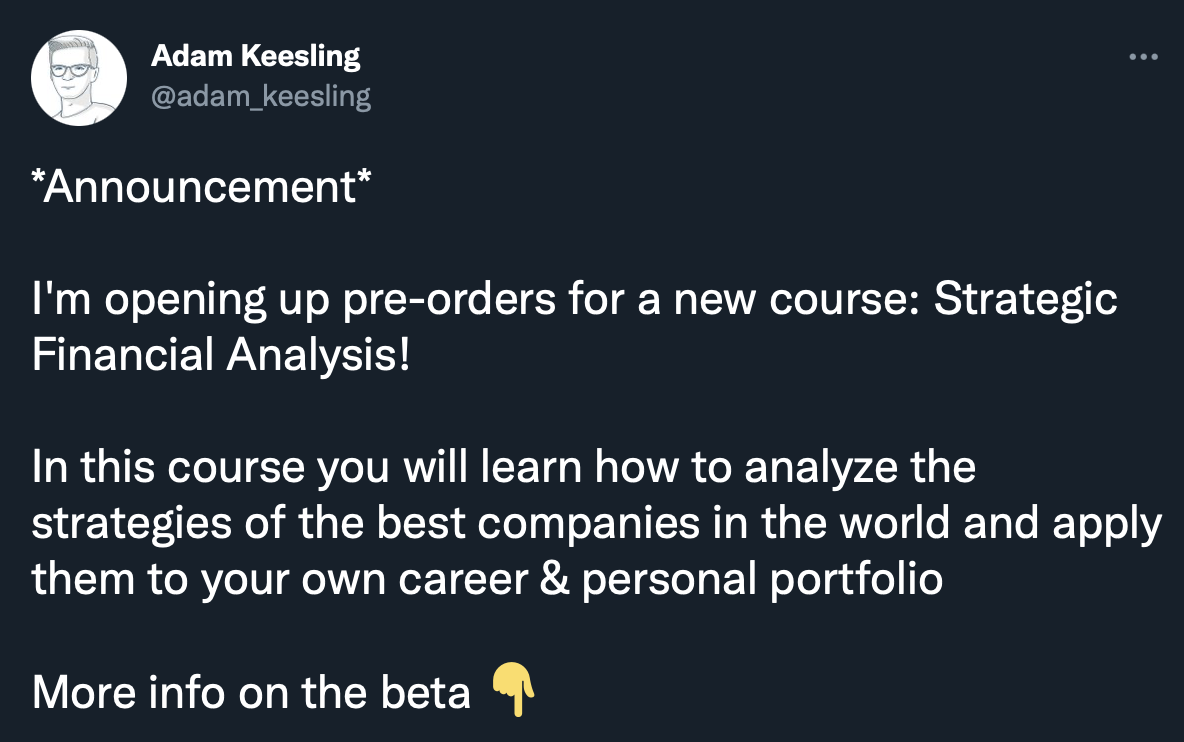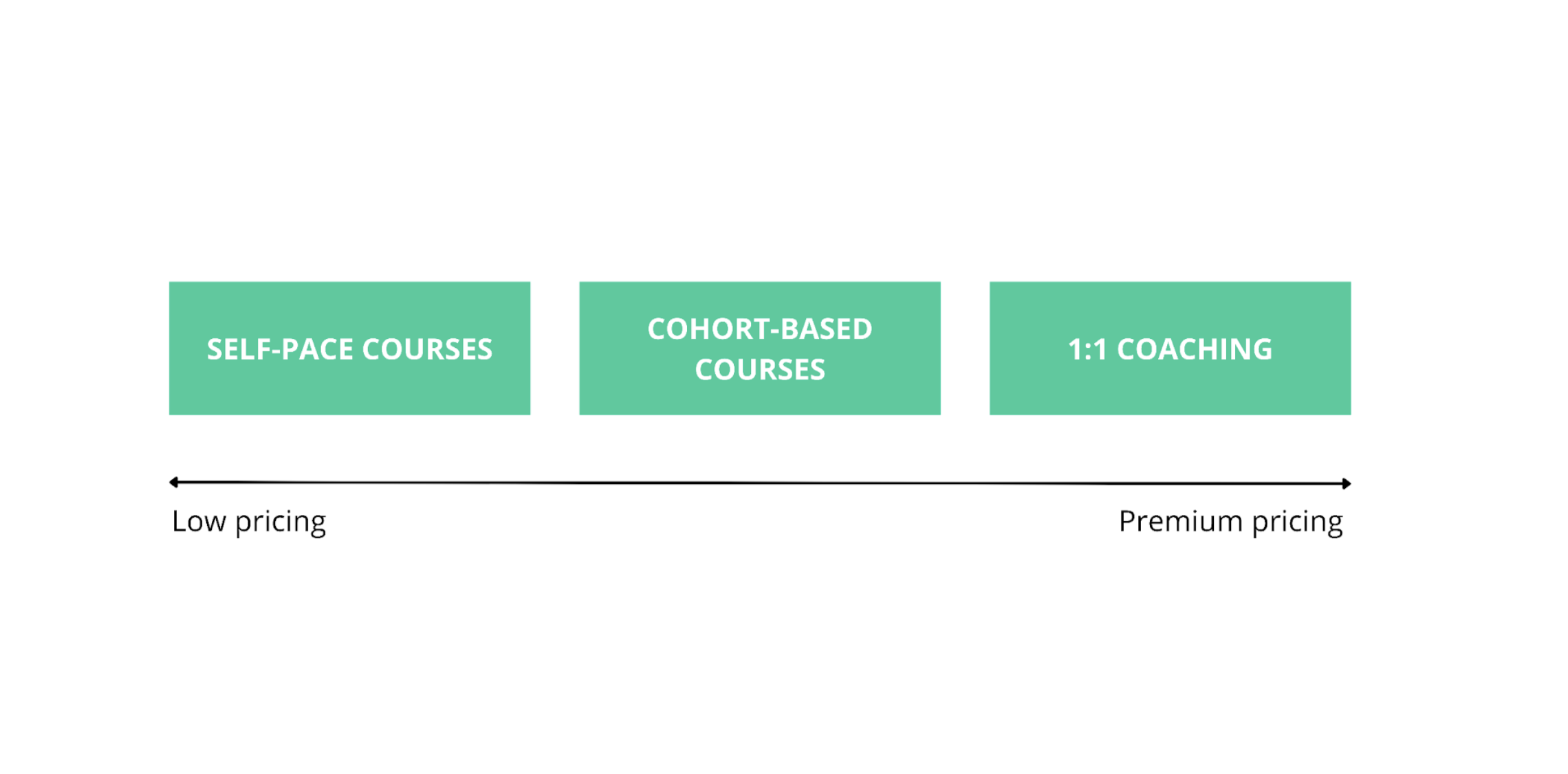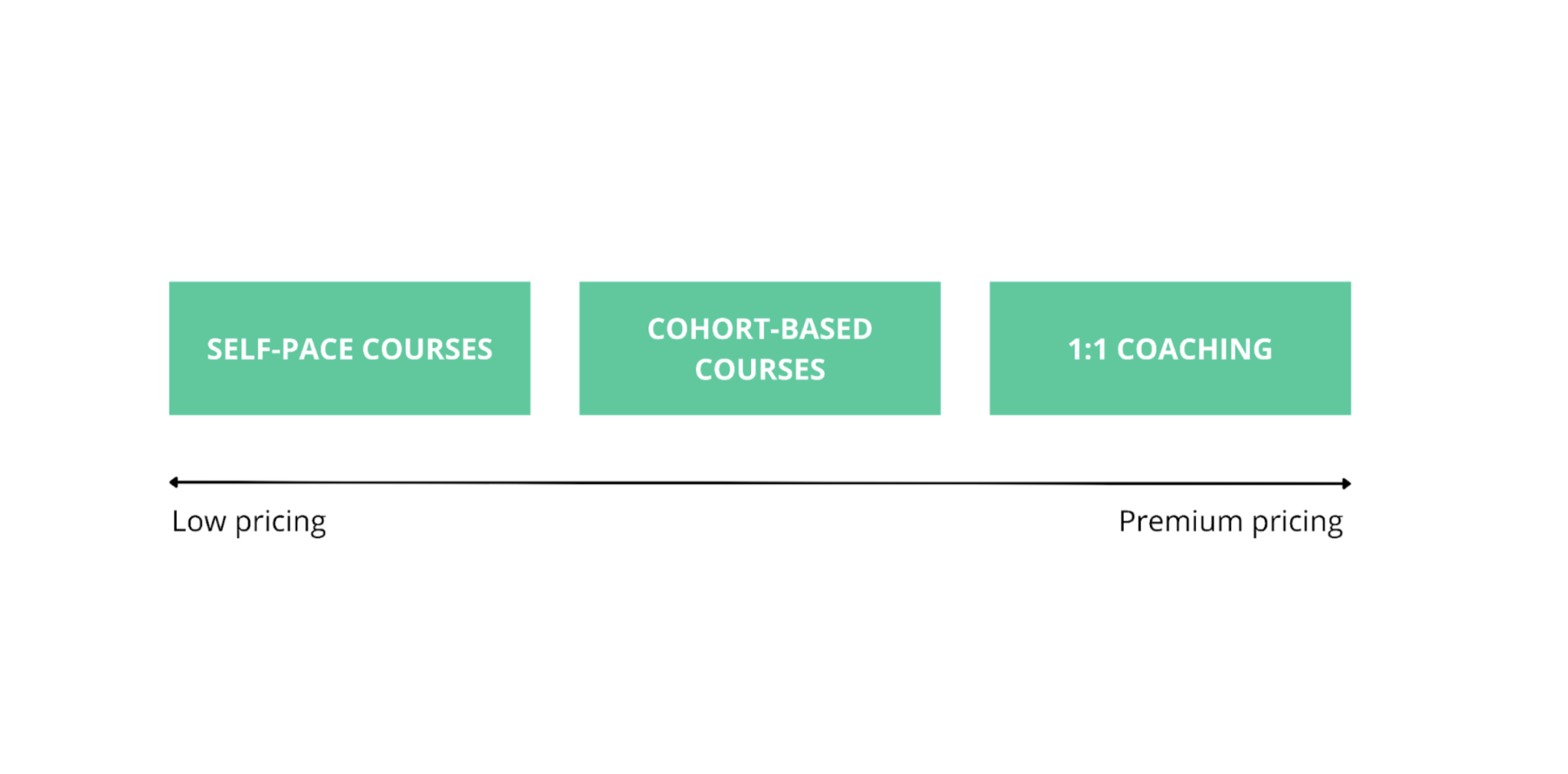Here’s how to turn your evergreen course into a cohort-based course


If you’re looking to expand your online course business and try the cohort-based course model, there is one easy way to do it. Instead of creating a new course from scratch, turn one of your evergreen online courses into a CBC.
Transforming an existing course is much simpler than creating a brand new one. You already have the curriculum and the course material ready. All that’s left to do is make a few changes, add a few key pieces, and re-launch. Let’s discuss how you can accomplish all that in six easy steps.
Turn an evergreen online course into a cohort-based course in 6 steps
Step 1: Validate your idea
Before making any business decision, it’s smart to do some market research. The same applies to turning your evergreen course into a cohort-based course. To check if there is demand for cohort-based learning, turn to your current audience.
You can carry out the market research in two ways:
- Survey your audience and current students: Put up polls on social media, send out an email with the link to the survey, and ask your students how they feel about a cohort-based course.
- Soft launch your CBC course: Offer the cohort-based course to a limited audience to see if there is a demand (you only have to announce it!)
A soft launch is a very popular strategy for online course creators because it allows them to see whether their ideas are valid before perfecting the course curriculum. Yes, you read that right. To validate your CBC idea this way, you only have to announce the course launch without creating it.
Entrepreneur Adam Keesling did just that with the first cohort-based course he decided to launch. On his Twitter, he shared the tweet that announced his upcoming CBC before he even started working on it:


After 24 people signed up for the course and another 200 joined the waitlist. Only then did Keesling get to work creating the curriculum he was going to teach his in his cohort-based course.
You can easily borrow this soft launch strategy and apply it to verify whether there’s a demand for your evergreen course in a cohort format. On your social media or in email newsletters, invite people to register for the small group course you’ll be teaching.
When there’s interest and the available spaces are filled, you can be sure that your idea to turn the evergreen course into a cohort-based course is valid. And then, it’s time to start working on turning the evergreen course into a CBC.
Step 2: Review your curriculum
Adapting an evergreen online course into a CBC is easier than creating one from scratch. You already have the curriculum and course material ready. However, there will still be some work to do.
First, you’ll want to look at your curriculum and course material. Decide which parts of your lessons you want to teach students live, and which they should cover on their own time. It might be a smart idea to teach your students the theory on the subject and lead discussions during live sessions. And then, leave them with assignments to deepen the new things they learned on their own.
For example: Let’s say you teach people how to manage their time better. During your live lessons, you might want to spend time teaching your students the theory of different productivity and time management strategies. You might also want to go over some case studies. These can come from your previous students or your personal experience.
Then, you can assign homework that would include practical assignments to help students apply the theory they learned during live lessons on their own time. Things like “use the Pomodoro technique we learned today to plan your work next week.” Or “use the GTD method to organize your work documents until we next meet for a live lesson” are great homework assignments that will help your students put theory to practice.
Of course, how you’re going to put together your CBC curriculum depends on what sort of subject you’re teaching. If you’re teaching coding, for example, you might want to explain the theory and give students the assignments in class to make the learning more effective.
Remember: You can always adjust the way you structure your lessons in the future. One of the best things about cohort-based learning is the immediate feedback you can receive from your students. So, if you’re unsure how to structure your lessons, start with something and then be ready to adjust as you go.
Step 3: Decide on your pricing
Deciding on the right pricing for your cohort-based online course is a very important step because you’re going to be investing your time and energy in teaching and managing students. So, don’t be afraid to set the right price for your time.
When you’re thinking about setting the price for your newly transformed online course, think of it this way:


Cohort-based online courses fall in a sweet spot when it comes to pricing your services. You can charge more than you would for your evergreen course. This will increase your revenue and provide more value for your students all at the same time.
Research the market to see what other online course creators are charging for their cohort-based courses. The price will vary depending on the industry. So looking for examples from other creators in your niche might be smart. This way, you’ll get the most accurate picture of what people are willing to pay for a course similar to yours.
Step 4: Pick a platform to communicate with students
Unlike your evergreen online course, a cohort-based course will require you to communicate with your students. And for that, you’ll need to find the best solution that works for you and your students. There are many different tools available online that you can use:
Discord
This platform is very comfortable because you can create a private server that only your students can access and chat with them there. In addition, you can create different forums on different topics where people can chat. Discord also allows you to do voice and video calls all in one place, and you can easily stream your screen to your students while you’re doing something.
Zoom
Zoom is a free conference call software available online to everyone. You can create meetings and share links with people to access the call with one click. It’s easy to use, and flexible, allows you to have audio and video calls, share your screen, do polls, and even record your sessions. If you want your students to have access to the sessions after, so they can easily go back and re-watch certain sessions, Zoom can be very handy.
For community management, Facebook Groups are convenient and available. It’s free to use, and most people already have Facebook accounts and are familiar with the platform, so joining the cohort group will be easy.
Inside your group, you can do lives, upload videos and other content straight to the platform, run polls, and allow your students a place to connect. It’s a very useful tool if you’re looking to cultivate a community and a lot of online course creators use it for their businesses.
Step 5: Schedule, schedule, schedule
The cohort-based course will require much more time management than the evergreen online course. Once you have all of the details sorted for the course material, it’s time to spend some time scheduling and planning out the lesson times.
If your students are in different time zones, you’ll have to make sure you pick the time for live lessons that works the best for everyone. Of course, no time will ever be perfect for every single student. But choosing the time of the day that’s appropriate for most should be enough.
You might want to create a calendar that you’ll share with your students. This will allow you to easily manage and plan your time. And, it will save you time and effort because you can share the calendar with all cohort students without having to tell everyone when the lesson takes place each time.
Google Calendar is a free tool available to everyone with a Gmail account. It allows you to create different calendars and color code them. So, you can create one for each cohort you launch and easily invite people to events and lessons.
Preparation in advance will save you a lot of time and headaches, so spend some time scheduling and planning out the curriculum. And when the course launches, everything will run smoothly.
Step 6: Re-launch
Turning your evergreen course into a cohort-based online course is huge for your business. So, don’t sweep the launch under the rug. But plan it properly and launch with a bang. Adapting your self-paced content into a CBC opens your business to a new market, and you want to take advantage of that.
Here are a few launch strategies you want to consider:
- Take advantage of your email list: It’s your best asset and the place where real fans of your business are. So, when you’re ready to launch your CBC, run a week-long email marketing campaign introducing the new program to your audience.
- Guest blogging and podcasting: A few weeks before launch, go on other people’s blogs and podcasts and share something valuable with them. This will introduce you to new audiences and give you a chance to build your credibility as an educator in your field.
- Social media campaign: Utilize your social media following for the new launch. Create a week or a two-week-long campaign where you promote your new cohort to your current audience, showing the new and improved ways to reach their goals with your help.
Turning your evergreen online course into a cohort-based course is exciting, so share it with your audience and build the momentum like you would with a completely new course.
You can easily validate your course idea before you sink time into it. Use this worksheet to make sure you’ve got the right idea before working it all out.